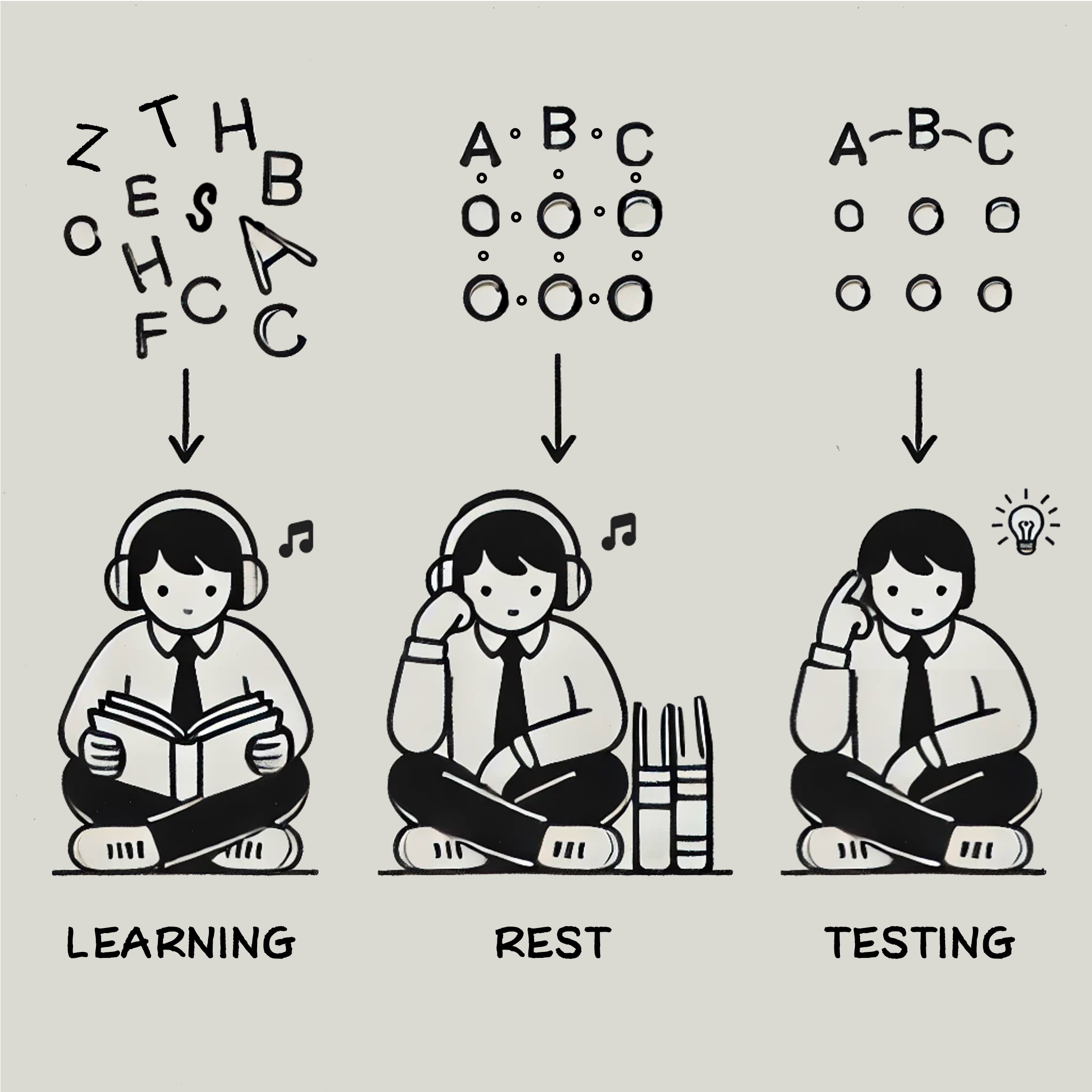Memory reactivation generates new, adaptive behaviours that reach beyond direct experience.
Taking breaks after learning helps our brain discover things we weren’t directly taught. However, it’s unclear how this happens. This study used a technique called Targeted Memory Reactivation to guide the brain’s natural replay of recent memories during rest and found it helped people discover new connections to support inference. This suggests that replaying memories during rest is key to finding hidden links and solutions to novel problems.
Periods of rest and sleep help us find hidden solutions to new problems and infer unobserved relationships between discrete events. However, the mechanisms that formulate these new, adaptive behavioural strategies remain unclear. One possibility is that memory reactivation during periods of rest and sleep has the capacity to generate new knowledge that extends beyond direct experience. Here, we test this hypothesis using a pre-registered study design that includes a rich behavioural paradigm in humans. We use contextual Targeted Memory Reactivation (TMR) to causally manipulate memory reactivation during awake rest. We demonstrate that TMR during rest enhances performance on associative memory tests, with improved discovery of new, non-directly trained associations, and no change observed for directly trained associations. Our findings suggest that memory reactivation during awake rest plays a critical role in extracting new, unobserved associations to support adaptive behavioural strategies such as inference.

2024. Sci Rep, 14(1):30097.
2024. Neuron, 112(22):3768-3781.e8.
2021. eLife, 10:e67355